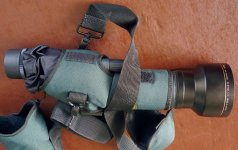normjackson
Well-known member
Just curious if anyone has something like an Olympus TCON-17 or B300 and thought to try it out. Presumably the light loss wouldn't be too bad but wondered how significant the loss of quality would be. If performance is a near miss I understand there are better quality converters around (though possibly no longer in production) from Panasonic and Nikon.





